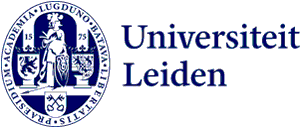
Research: Points system makes neighbourhoods nicer to live in
A lot of municipalities work with a points system to encourage construction projects to take biodiversity and creating green areas into account. But this way of working also benefits local neighbourhoods and residents, master's student Marije Sesink discovered. She based her study on The Hague.

If you have to do construction or renovation work in your local area, it's better to do it in a way that takes nature into account. Nature-inclusive construction, as it is known, can involve all kinds of measures, from using green roofs, incorporating bird nesting boxes into the walls, planting more shrubs around the building, placing stickers on panes of glass to stop birds flying into them or reducing light emissions from the buildings (excessive lighting causes problems for many animals). These measures were originally designed to protect bird species, but Marije Sesink (a graduate of Governance of Sustainability) discovered that they increase biodiversity and generate what are known as 'ecosystem services'. These are the benefits of a green environment for people. For example, more greenery helps keep the environment cooler, more water is retained in the area and people generally feel better and more relaxed in a green environment.
Scoring more points
When municipalities are looking for a project developer for a construction project, they often use a points system. Points are awarded to nature-inclusive elements of a project developer's plan; a developer who scores more points is more likely to secure the project. For her master's thesis Marije Sesink wanted to know whether the points system also had benefits for people. She started by comparing the points systems of different municipalities. She then examined whether the points system in The Hague can contribute to specific aims of the city, such as more nature in the built environment, nature that helps with heat reduction and nature that helps with water storage.
Advantages of nature for The Hague
Sesink used local maps of The Hague to show that every part of the city benefits from specific ecosystem services. 'In the city centre it's super warm in the summer,' she says. 'It can be five degrees hotter than outside the city. Particularly in the Schilderswijk area, a lot of attention has been paid to this over the past few years because on hot days there were significantly more deaths. If you incorporate more greenery into these areas, it has a cooling effect.' Some areas have a lot more buildings, and bricks and concrete don't retain water. ‘Industrial areas in The Hague, like Kerketuinen and Zichtenburg, are less green areas, and drainage can be a problem there when a lot of rain has fallen. The same applies for densely built-up areas like Scheveningen, Binckhorst and Leidschenveen.’ And in some places in the city, like the centre, there is very little in the way of greenery, while it's far more healthy for people to have a lot of trees and plants around.

Advice: Use neighbourhood-specific points systems
Sesink concludes that the points system is a useful instrument for cities like The Hague to 'direct' construction projects towards specific ecosystem services. She also has a special recommendation for The Hague. 'In a new version of the points system, the municipality has removed the division into neighbourhoods, and currently uses a system that applies to the city as a whole. But I believe that neighbourhood-specific points systems can be very useful. A type of neighbourhood (such as a historic city centre, new suburban housing developments, and high-rise areas), like those that were used in the first points systems, show what kinds of ecosystem services can be beneficial there and what measures can contribute to a more pleasant living environment in these areas.'
Advice: Involve the local neighbourhood
‘Something else that isn't in the points system yet - which is what makes a Leiden citizen project Sustainable City Lab so great - is awarding points to project developers who engage with local residents. Local people can then indicate what they think is important in terms of green areas in their neighbourhood, what kinds of construction measures they would feel more comfortable with and whether they think there really is room for particular modifications.'
Sesink has now graduated and has shared her findings with the municipality of The Hague. Her thesis was supervised by Roy Remme.
Text: Jan Joost Aten
Photo above article: ANP
